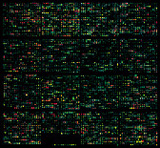[1] Sohn, K., Senyürek, I., Fertey, J., Königsdoefer, A., Joffroy, C., Hauser, N., Zelt, G., Brunner, H., Rupp, S. (2006)
An in vitro assay to study the transcriptional response during adherence of Candida albicans to different human epithelia. FEMS Yeast Research 6: 1085-93
[2] Sohn, K., Urban, C., Brunner, H., Rupp, S. (2003)
EFG1 is a major regulator of cell wall dynamics in Candida albicans as revealed by DNA microarrays. Mol. Microbiol. 47: 89-102
[3] Hauser, N. C., Martinez, R., Jacob, A., Rupp, S., Hoheisel, J. D., Matysiak, S. (2006)
Utilising the left-helical conformation of L-DNA for analysing different marker types on a single universal microarray platform. Nucleic Acid Res. 34: 5101-5111
[4] Hauser, N. C., Zeller, Z., Brunner, H., Tovar, G., Rupp, S. (2004)
Array-Techniken zur Diagnostik von human-pathogenen Pilzen. Mycoses 47/8: 362
 Fraunhofer Institute for Interfacial Engineering and Biotechnology IGB
Fraunhofer Institute for Interfacial Engineering and Biotechnology IGB